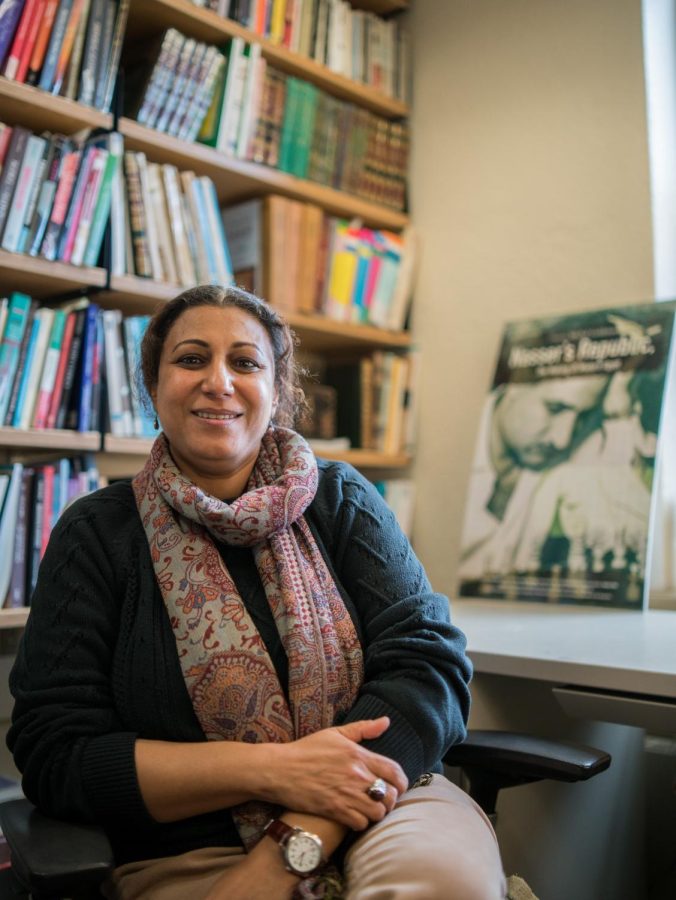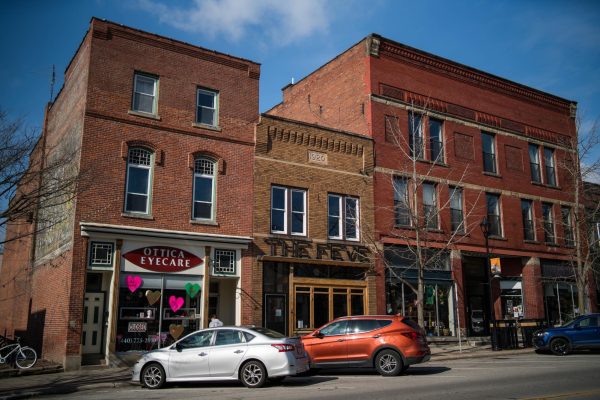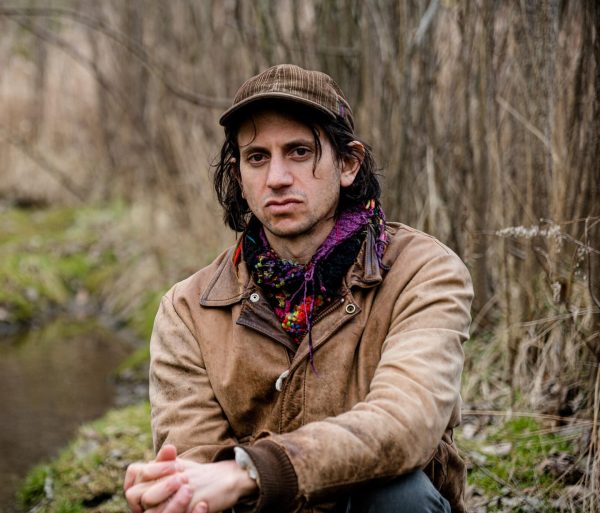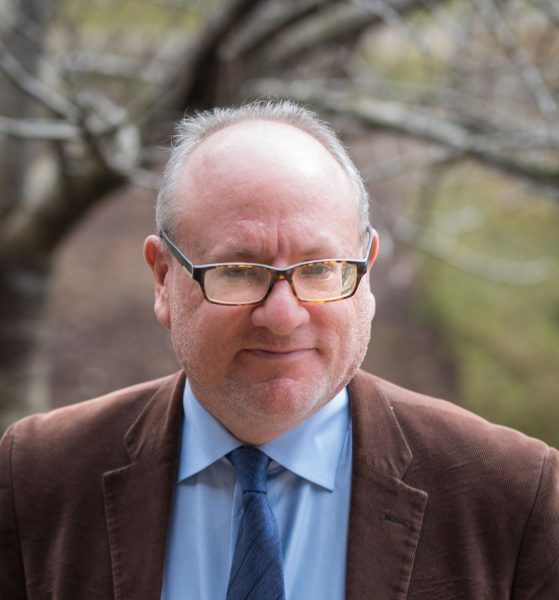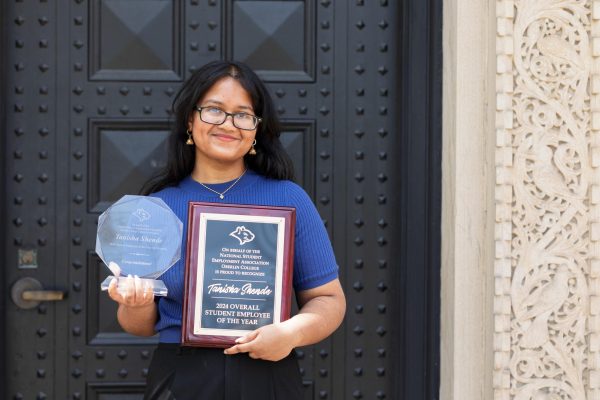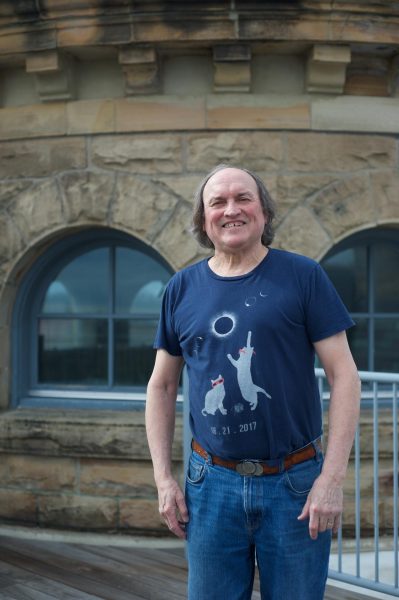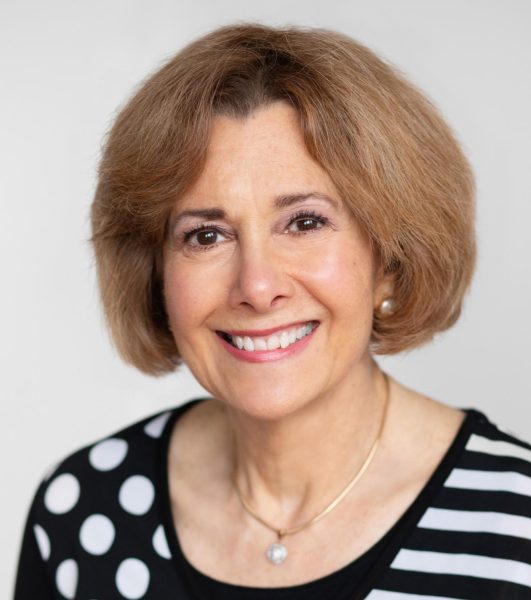Zeinab Abul-Magd: Professor of Middle Eastern History and Chair of International Affairs
Zeinab Abul-Magd
Zeinab Abul-Magd is chair of the International Affairs integrative concentration and a professor of Middle Eastern history. This January, she developed an international Winter Term project in collaboration with the American University in Cairo titled “Museums, Historical Memory, and Politics in Egypt.” The Review spoke with Abul-Magd about the creation of the project, the current political regime in Egypt, and important things for U.S.-educated students to consider about global freedom of expression.
This interview has been edited for length and clarity.
Why did you decide to create this Winter Term project?
I would like to actually begin the story with Donald R. Longman Professor of English, Cinema Studies, and Comparative Literature Anuradha Needham. When we did the StudiOC learning community “From Bombay to Cairo: Cinema and Social Change” in 2019, we connected it to a course offered at the American University in Cairo, and our students met virtually with Egyptian students. Dr. Needham was the one who had the contact at the American University in Cairo, Ferial Ghazoul. Ghazoul is a comparative literature professor originally from Iraq. So, Dr. Needham and I went to Egypt and met with our partner there, and we closely developed our three syllabi and made sure that the themes were coherently tied to each other and that our students
in both schools were going to enjoy the experience of interacting with each other on Zoom.
I knew through this that our students are really interested in talking to other students in other campuses across the globe, so I thought that a wonderful follow-up on this would be the Winter Term this year instead of them talking to AUCians virtually from here. It isn’t possible to take them there during a regular semester, but it is possible to do this during a Winter Term. I closely collaborated with an AUC professor to create this Winter Term course in which both Oberlin and AUC students participated. It was as if it was one course co-taught between Oberlin and AUC on the AUC campus. It was one group of students, AUC and Oberlin students, with two instructors.
Was there a contemporary political context that played into the things you were teaching in the Winter Term?
Absolutely, contemporary political context is an integral part of this because Egypt now has a military dictator. Military dictators usually are not liked by the international community. As soon as he was elected president in 2014, the international community was very reluctant, very opposed in some cases, to recognize him as the president of Egypt.
He quickly realized that the field of museums is an ideal field for him to gain legitimacy domestically by fostering notions of Egyptian national identity. He over-emphasizes ideas of Egyptian nationalism and over-celebrates Egyptian nationalism and the heroism of the Egyptian military. So, he put this over-emphasis into museums. By selling the myths of Egyptian nationalism to the Egyptian people, he bought their loyalty and their recognition. For the international community, he posed as a man who cares for the history of the country, for the global Islamic history — as an intellectual man.
I wrote a whole book about the military and the economy in Egypt. The military institution — his institution — controls the economy. So many sectors are monopolized by the military, and now they would like to monopolize knowledge production, and also monopolize memory or remembrance — how people remember their past, and how people recollect their historical memories and put them on display.
Thinking also about how an American-educated audience could come into this context, what were some things you were hoping your students would be aware of during the project?
I have two factors that come together to answer the question. The first factor is that I wanted my students to be exposed to universal ideas that any community could engage in, whether it be American communities, Asian communities, Middle Eastern communities, or African communities. Any community, regardless of where it is, normally engages with questions of identity and questions of remembering the past and what museums could do to remember a certain past and emphasize certain identities or
give more superiority to certain races or certain ethnic groups over others. These are universal questions that students anywhere engage with or people who care about history anywhere would like to learn about.
At the same time, keep in mind that there is another group of students with them in the same course, the Egyptian students, who are actually living under this dictatorship. When they go to a museum and they notice something that they can politically criticize, they would keep silent. They are young people who live in a security state and, 10 years ago, youth like them led the revolution against a similar security state, and they went nowhere with it. A lot of them are in prison now. So, if you dare to speak up and politically criticize your military dictator now, thinking that you can have another revolution like the previous generation had, then you might be very mistaken.
So, we have two groups of students who enter into the same space of a museum. One of them is free to think and criticize, and the other one is so restricted and restrained, they have to self-censor all the time. There are communities of youth like this globally, who live under very politically oppressive conditions. They manage to go through their life on a daily basis. They manage to go to college, finish their education, and get jobs under these kinds of circumstances, whether in Egypt or elsewhere. I wanted my
students to see this and to understand what other communities outside the U.S. go through and appreciate what kinds of totally different experiences other youth go through to get education and to learn something.


